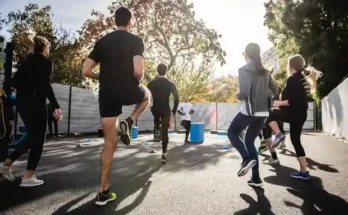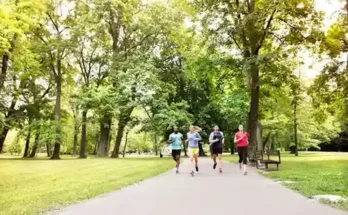In today’s hyper-connected, fast-paced world, fitness has become more than six-pack abs and gym selfies. It’s a lifestyle, a mindset, and for many, a compass pointing toward balance and resilience. Gone are the days when being fit meant running a five-minute mile or bench pressing twice your weight. Fitness today is personal, holistic, and evolving.
Fitness is about functionality—being able to carry your groceries, play with your kids, or climb stairs without getting winded. It’s about mental clarity, emotional regulation, and living with more energy and less stress. Most importantly, it’s about becoming the best version of yourself, one movement, one meal, and one mindset shift at a time.
The Evolution of Fitness Culture:
Fitness isn’t a new concept. Ancient civilizations understood its value long before protein shakes and treadmills. The Spartans trained for battle with calisthenics and resistance. In ancient China, forms of martial arts and flowing movements like Tai Chi emphasized harmony between mind and body.
Fast forward to the 20th century, and fitness took on a new face. Jack LaLanne inspired Americans to jump, stretch, and eat clean. Jane Fonda made aerobics a household name. Arnold Schwarzenegger brought bodybuilding into the mainstream.
Then came the 2000s, when boutique studios, CrossFit boxes, and fitness influencers began shaping trends. Technology entered the scene with fitness trackers, online coaching, and streaming workouts, forever changing how we engage with our bodies.
The Pillars of a Sustainable Fitness Journey:
-
Movement That Matches Your Life
One of the biggest misconceptions about fitness is that it must be intense to be effective. But sustainability beats intensity every time. A fitness routine should suit your lifestyle, personality, and goals. For some, that’s lifting weights; for others, it’s hiking, swimming, or dancing in the living room to their favorite playlist.
Movement shouldn’t feel like punishment—it should feel like coming home to your body. When exercise aligns with joy, consistency naturally follows.
-
Nutrition as Foundation
You can’t out-train a poor diet, and you shouldn’t try to. Nutrition is where fitness gains are built or broken. But forget restrictive diets or punishing detoxes. True fitness comes from learning to nourish, not deprive.
Whole foods—rich in color, texture, and nutrients—support performance, recovery, and mood. Hydration plays a quiet but powerful role. And learning to listen to your body’s hunger cues helps develop a lifelong, healthy relationship with food.
Fitness isn’t about eating less. It’s about eating smarter.
-
The Often-Ignored Secret Weapon
Sleep, stretching, and self-care are often pushed aside in pursuit of faster gains. But recovery isn’t optional—it’s essential. Muscles grow when you rest. The nervous system resets when you sleep. And your mindset recalibrates during downtime.
Rest days are not setbacks. They’re stepping stones. And skipping them is like trying to run on a flat tire—you won’t get far before something breaks.
Mind Over Muscle:
-
Discipline Beats Motivation
Motivation is like a spark. It flares up, burns bright, and then fizzles out. Discipline is the slow-burning fire that keeps you going when motivation disappears. And it will disappear—on rainy days, after long work hours, when results are slow.
Successful fitness journeys rely less on hype and more on habit. Showing up on the hard days, doing the work when no one is watching, and trusting the process even when progress feels invisible—that’s the real flex.
-
Body Image, Self-Worth, and Social Pressure
We live in a filtered world where fitness is often equated with aesthetic perfection. But chasing a body ideal that isn’t yours can sabotage your journey. Fitness is not a punishment for eating pizza or a race to achieve someone else’s physique.
The strongest bodies aren’t always the leanest, and the healthiest minds aren’t always the most ripped. True fitness is feeling good in your own skin, honoring your body’s story, and moving in ways that make you proud—not ashamed.
Fitness for Every Stage of Life:
-
Youth and Early Adulthood
For young people, fitness lays the groundwork for lifelong habits. It builds bone density, strengthens mental focus, and fosters confidence. Sports, dance, or simply playing outside teach discipline and teamwork in ways that last far beyond school years.
This is the age where experimenting with different styles—HIIT, yoga, strength training—can help individuals discover what feels most natural and enjoyable.
-
Midlife and Beyond
Fitness goals shift as we age. In your 30s and 40s, it’s less about aesthetics and more about energy, stress relief, and maintaining muscle mass. In your 50s and 60s, it’s about joint mobility, cardiovascular health, and injury prevention.
Strength training becomes more vital than ever to preserve muscle tone. Low-impact movements like swimming and yoga protect aging joints while keeping the body limber and strong.
And the best part? It’s never too late to start. The body adapts at any age, and every workout is a vote for a healthier future.
The Social Side of Fitness:
There’s something powerful about sweating with others. Whether it’s a running club, a CrossFit class, or a virtual yoga session, shared struggle creates connection. Fitness communities provide accountability, encouragement, and the simple comfort of knowing you’re not in it alone. And when you’re surrounded by people with similar goals, it’s easier to stay on track, celebrate wins, and bounce back from setbacks.
Having a mentor—whether a personal trainer, coach, or knowledgeable friend—can elevate your fitness game. They provide structure, correct form, and push you past your perceived limits. But perhaps more importantly, they help you see what you’re capable of when self-doubt creeps in. Learning is a lifelong part of fitness. New techniques, science-backed strategies, and evolving routines keep things fresh and effective.
Conclusion:
Fitness is not a destination—it’s a dynamic, lifelong relationship with yourself. It will ebb and flow, expand and contract, and take on different meanings at different times in your life. There will be days you crush personal records and days you can barely get off the couch. That’s part of the journey.
What matters most is showing up. Be kind to yourself. Moving because you love your body, not because you hate it. And remembering that the smallest, most consistent efforts often create the biggest, longest-lasting transformations.
So lace up your shoes, roll out your mat, or lift that dumbbell—not for anyone else, but because your body and mind deserve the very best version of you.




